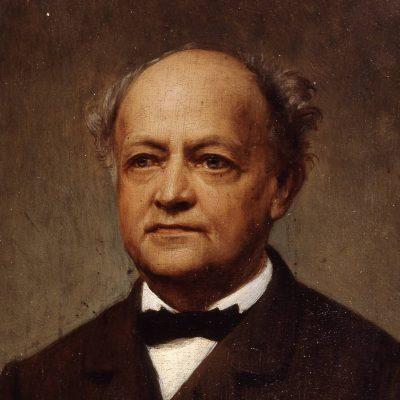

Welcome to the Köchel Catalog Online
Explore Mozarts WorkWhat began in 1862 as Ludwig von Köchel’s original chronological and thematic catalog of Mozart’s compositions is now available in an updated online version that reflects the latest in scientific and scholarly research and analysis.
Search directory










Breitkopf & Härtel
Breitkopf & Härtel, founded in 1719, is the oldest music publisher in the world. In 1862, Ludwig Ritter von Köchel published the first edition of his chronological catalog of the works of Wolfgang Amadé Mozart at Breitkopf & Härtel - a milestone in music research.

International Mozarteum Foundation
Wolfgang Amadé Mozart has fascinated people the world over for more than 250 years with the depth, scope, and beauty of his works, as well as his optimism, humor, and wit. The International Mozarteum Foundation is the world's leading institution for the preservation and dissemination of the invaluable cultural heritage that Mozart has left for us and brings the many facets of his life and legacy to the world.

Support the work of the International Mozarteum Foundation!
Help us to make the new Köchel Catalog available online for students and music lovers everywhere. With your donation you are helping to keep information on Mozart’s work readily available and easily accessible in a convenient electronic format. Thank you for your support!

Ludwig Köchel & the Köchel Catalog
In 1862, Ludwig von Köchel created the Köchel Catalog, a chronological listing of all compositions by Wolfgang Amadé Mozart. Since then, new findings have been included in several revisions. The new edition in September 2024 marked the latest milestone and is the first new edition of the Köchel Catalog since 1964.
Did you know?
457
Wussten Sie, dass die Klaviersonate in c KV 457 das sprechendste Beispiel für Mozarts Kunst, Kompositionen auszuzieren ist? Quellen zu Klavierwerken, die Mozart für sich selbst oder seine Schüler schrieb, enthalten in der Regel fast keine aufführungspraktischen Eintragungen. Für die Veröffentlichung fügte Mozart oft zusätzliche dynamische Angaben hinzu und schrieb Passagen aus, die er oder seine Schüler mit Verzierungen gespielt hätten. Dem Autograph von KV 457 liegen mehrere Blätter mit Auszierungen bei, die zeigen, dass Mozart mindestens drei Anläufe brauchte, bevor er selbst mit der ausgeschriebenen Veränderungen des langsamen Satzes zufrieden war.
317
Wussten Sie, dass überhaupt nur zwei Mozart-Messen, KV 257 und KV 317, in den ersten fünfzig Jahren nach dem Tod des Komponisten in Partitur veröffentlicht wurden? Beide Messen wurden 1803 bei Breitkopf & Härtel in Leipzig herausgegeben. Mozarts Kirchenmusik fand in Süddeutschland und den habsburgischen Ländern zwar weite Verbreitung, aber nahezu ausschließlich in handschriftlichen Kopien.
491
Wussten Sie, dass Mozart das Klavierkonzert in c KV 491 vermutlich für einen seiner Schüler und nicht für sich selbst geschrieben hat? Zwar sind die Hintergründe der Entstehung- und Erstaufführung unbekannt, aber gegen Ende des 1. Satzes findet sich im Autograph viermal die Karikatur eines Männerkopfs. Derartige Zeichnungen von Mozarts Hand sind sonst nur aus den Unterrichtsmaterialien seiner Schülerin Barbara Ployer bekannt.
525
Wussten Sie, dass die Kleine Nachtmusik KV 525 ein Fragment ist?
Mozart hat die Satzfolge im eigenhändigen Werkverzeichnis genau mitgeteilt: „bestehend in einem Allegro, Menuett und Trio. – Romance. Menuett und Trio, und finale“. Der erste Menuettsatz, der gemäß Divertimento-Tradition an zweiter Stelle des ursprünglichen fünfsätzigen Werks stand, ist – vielleicht schon zu Mozarts Lebzeiten – verlorengegangen. Grund dafür ist, dass Mozart den langsamen Satz ursprünglich anders konzipiert hatte. Er strich den ersten Entwurf, ein Larghetto in C KV 525a, nicht einfach aus, sondern riss das Blatt aus dem Autograph heraus; damit wurde aber auch die erste Hälfte des Doppelblatts, auf dem das erste Menuett und Trio standen, lose und ging später verloren.
522
Wussten Sie, dass es zum ersten Satz des Musikalischen Spaßes nie eine Originalpartitur gegeben hat?
Mozart hat nämlich für diesen Satz, wie er dies auch sonst gelegentlich bei Kompositionen für den Freundeskreis tat, gleich in Stimmen aufgeschrieben – eine bemerkenswerte Gedächtnisleistung, da Mozart selbst auf diese Weise das Verhältnis der Stimmen zueinander nicht einfach überprüfen konnte. Die Stimme der zweiten Violine liegt sogar in zwei verschiedenen Fassungen vor.
